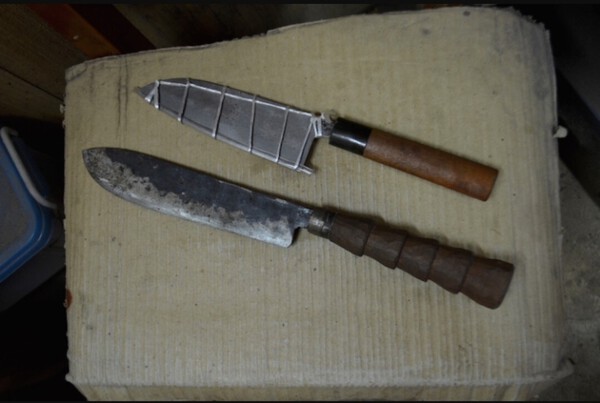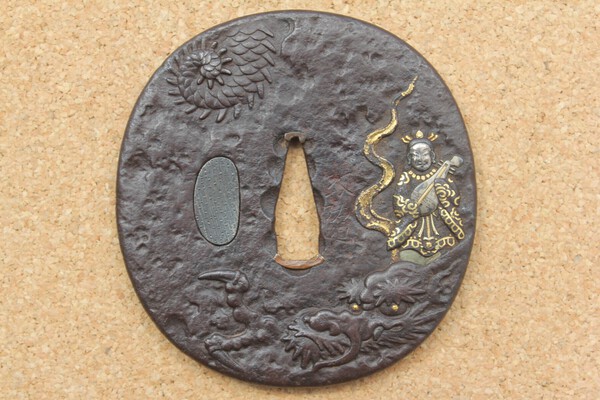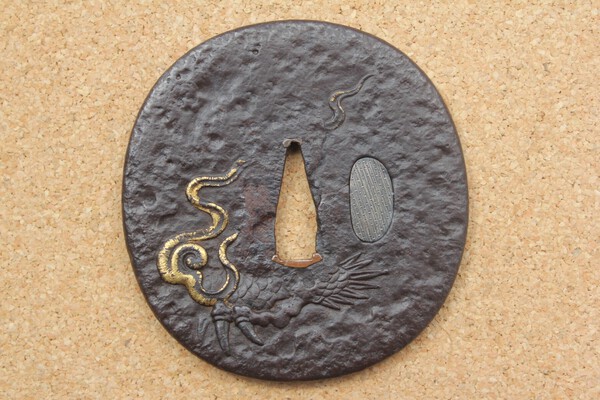Leaderboard
Popular Content
Showing content with the highest reputation on 07/10/2022 in all areas
-
Hi, 六兵衛焼 (Rokubei yaki) Kiyomizu Rokubei. 瓢たん "Hyotan" (a gourd) https://en.wikipedia.org/wiki/Kiyomizu_Rokubei5 points
-
As far as tsuba go there are Tôran-kai 倒卵形 [also known as Hoju tsuba] which date back 1,500 years and on occasion turn up on auctions- see https://richardturner.wordpress.com/2009/04/10/toran-kai-倒卵形-tsuba/ https://tsubakansho.com/tag/hoju/ https://www.christies.com/en/lot/lot-1928107 [The Christies catalogue lists 129 as Shitogi but it is Hoju - jewel shape, Kofun refers to a burial mound] https://tosoguya.com/bronze_toran_kei.html - items for sale A link back to 2013 NMB with 'old' tsuba https://www.mandarinmansion.com/glossary/tsuba The earliest known tsuba are the so-called tôran-kai (倒卵形) or "inverted egg shaped" tsuba that date from the Kofun period of circa 300-568 A.D. These were most likely made by sword makers themselves. Metropolitan Museum, accession number 06.310.9. As Piers says, how far back do you want to go?4 points
-
3 points
-
Hi Alban, As regards swords, it’s (normally) not so important to be pinpoint accurate with transposing the date into the western calendar. In this case the Showa era is calculated from 1926, so add on 18 and subtract 1 as the era always begins in the first listed year and it’s 1943. I didn’t look any deeper than that.3 points
-
I will do my usual stunt of being controversial. Its obvious the poster is trying to buy CHEAP authentic nihonto. There are more collectible blades, but... Though not in the same league as nihonto community luminaries, a tea master to Ashikaga Yoshimasa wrote a lengthy tractate on whether collecting should be started with minor or greater objects. The arguments made are all still valid today and he personally was on the side of minor, bright objects in near perfect condition as the best beginner's item. Well, this one sort of like this. One just needs to buy as cheaply as possible.3 points
-
2 points
-
@AntiquarianCat Hi Juan I've got nanbokucho with tokubetsu hozon which has a carving , two. However I beleive these to be genuine of that time due one showing some ageing. Otherwise that you have their is fantastic looking blade which I would definitely take to shinsa2 points
-
Hi Juan, I don't think that the carving will cause it to fail shinsa. Swords pass all the time with ato hori of varying degrees of quality, so I'd submit it unless you have a better candidate given what Mr Benson has said about its age.2 points
-
I think it’s worth posting yet another Darcy article https://web.archive.org/web/20201201120419/https://blog.yuhindo.com/the-humble-wakizashi/ A mumei wakizashi is going to have limited resale value, and eBay will often overprice (because the huge fees sellers are charged), so make sure you don’t pay too much. That said I found study pieces helpful, I had many books but without looking at real examples it was hard to get what was chikei and was was a scratch. If you can get something in decent polish and it’s well priced and it helps you, good. Just keep in mind a lot of study piece swords won’t resell for a lot. As for this sword, I don’t see any serious kizu, the area you circled looks like rust and hadori having come off. If I were you I would make sure I don’t over pay and I would check for flaws. In all honesty the sellers here including dealers are much safer to buy from and most give much better deals. I’ve pretty much quit eBay and done my buying here.2 points
-
Francesco, to reply to your initial question ....That traditional Japanese swords made by traditional Japanese methods are brittle and lose their edge easily because they are created by a method designed to make sharp blades from some scarce iron ore. He concludes by writing that probably a kitchen knife from a Chinese butcher (or any culture with access to decent iron ore) of the same period was sharper, held the edge better, and was less brittle than most Japanese swords.... I would like to mention that this text is contradictory in itself and shows some lack of understanding of metallurgy basics. In the traditional TATARA (bloomery kiln) process, the quality of the iron ore used has not so much to do with the quality of the resulting iron. With the refining processes used in Japanese sword-forging, a very pure and homogeneous steel is the result. In high carbon steels, brittleness can occur as a form of extreme hardness. Sharpness has nothing to do with it; you can even sharpen a simple soft iron blade to razor sharpness, but it will not keep its edge in use. The famous composite technology of Japanese swords allows to have a sharp while very hard edge combined with a resilient body of the blade. Looking at the purpose these Japanese swords were/are made for (= a slicing cut), there was - and is - no better techniques available with low-alloy carbon steels, and you will struggle to find a modern high-end steel with similar properties under these conditions. A butcher knife can never be compared to a Japanese sword as the uses are very different. You would not compare an axe (with good edge retention in use) to a sword, would you?2 points
-
Hello all! Here is an interesting tsuba that I saw. I have not seen anything like this previously. A “bell” shaped tsuba with a “hole” at the top of the bell and a “mask” at the bottom right. Was it used as a necklace after it was no longer used on a blade? It looks quite old and appears to have been mounted. It also appears to be a cast tsuba (or cast and hand worked?). Only the omote has a design and the ura is “hollow” with no design. A “strange” looking tsuba. Raises questions like “who would use it”, “was it fitted just for display only (or intended for use)”, “how old is it”, “why only a motif on one side”, “is it a Namban type”, “are there any others out there”, and other questions. Just an interesting piece (to me). Thought I would post it for opinions and thoughts. With respect, Dan1 point
-
Hi all, I wanted to share a little gem that arrived yesterday. From the mark I'm somewhat sure the maker is the first generation Kiyomizu Rokubei, but I could be wrong. In any case I think this is one of those peculiar and typically Japanese works that gives me that special tingle. In the shape of a gourd or hyotan with decoration of a grasshopper or locust. There's a kintsugi repair on the rim of the the inside of the lower half of the case. Hopefully members find it worth checking out. I posted a topic regarding the calligraphy that's on the (extremely worn), storage box lid which accompanied the incense case. Incase you feel like giving it a try 😃1 point
-
Hi all just looking for some more clarification. A more general question I have which might be quite simple. I've been reading clive sinclaires book, where he mentions ha giri and other faults which could mean that a blade is tired, or at the end of its life. However, from my knowledge on NBTHK hozon certifications. The NBTHK would not give hozon papers to a blade which is faulted or has ha giri or signs of tiredness? Is this correct? So buying papered blades ie hozon or tokubetsu hozon are a guarantee that you are not buying a tired blade with major critical faults, which the shinsa team have missed. I also gather it depends on when the papers were issued too ? If this is correct then this should be another indicator to why a new collector should try to buy a papered blade until they have the knowledge or skill to identity faults in a blade. Thanks1 point
-
Something else to digest regarding both Namban tsuba and also the "wabi sabi" aesthetic . I am presuming the "wabi sabi" aesthetic because I just can't see what other reason the tsuba maker would have to produce a piece as this. Quite carefully finished one side including the dragon overlay whereas the reverse is as rough as can be. Early owner or owners of this tsuba also have liked it enough to have mounted it on what looks like 3 different nihonto. Not usually my interest but I do like this one. 70 x 66 x ?. Here's hoping someone likes it. Roger j1 point
-
Temple bell are fairly common, one on auction now https://www.jauce.com/auction/k1019346842 no hole at the top and ura is just a plainer design of the omote. https://www.invaluable.com/auction-lot/iron-tsuba-in-bell-form-depicting-kiyohime-wrappi-293-c-e068d26af7 No details of the ura but it does have a hole at the top. https://br.pinterest.com/pin/650910952377735943/ also no ura view but it appears wan-gata [cupped shape ] http://jameelcentre.ashmolean.org/collection/7/10237/10401 Numerous rimmed designs as well. one here with bell and mask https://www.bonhams.com/auctions/14758/lot/205/ The guard itself is not bell shaped obviously.1 point
-
1 point
-
Sorry for the late response, I'm looking for as far back as possible, or as far back that is possible for stuff to survive. Thanks a ton for all the photos and links! I greatly appreciate it!1 point
-
Check out Morita San’s reading, and validation, in your link above! (PS I have a cylindrical Japanese vase of unknown origin, but that batta grasshopper is trying to tell me something. Congratulations on a neat object.)1 point
-
I found some pictures on my phone of some older looking examples and some newly made examples. There seems to be a good amount of variation both in blade shape and handle shape. I'll link the relevant sites to give credit where I can... https://kaniman.ti-da.net/e9439672.html https://kaniman.ti-da.net/a5412816.html https://okinawaclip.com/en/detail/1055 https://vadaantiques.com/沖縄手造りナイフ-入荷いたしました。/1 point
-
Forget shinsa criteria, I know 2 historical tanto which will never pass juyo but which should be by right as unique: both are the only existing exemplary tanto : one is by the founder of the Ayanakoji school, and the other one is this one:1 point
-
1 point
-
I hadn't ever given it any thought, but when writing the above (with consideration of soft kitchen knives and the need for honing to align the edge) I realised that the hardness of Japanese swords is the reason why we don't need to re-align the edge when cutting. I wonder if the (historical) scarcity of leather in Japan maybe contributed to the demand for and development of swords which did not require stropping to maintain the edge? To keep this post on topic, the edge staying aligned and not needing honing is the opposite of "losing the edge easily". A link with photos to clarify what I'm talking about: https://scienceofsharp.com/2018/08/22/what-does-steeling-do-part-1/ Here if you want to get deep into sharp (expect Scanning Electron Microscope (SEM) images of blade edges at 20,000x magnification): https://scienceofsharp.com/home/ As an aside, which may be of some interest. I have several kitchen knives made from Hitachi Shirogami Steel, which is designed to be chemically similar to the edge steel of Nihonto (though Shirogami is completely homogeneous mono-steel). The steel sharpens very easily and takes an extremely fine edge, in fact I'd wager that I can get a keener edge with Shirogami than any other steel. Shirogami doesn't hold its edge as well as Aogami (which has additional Tungsten and Chromium) but Shirogami gets sharper and is both easier and faster to sharpen. A video comparing Aogami (blue) and Shirogami (white):1 point
-
Welcome Ali Yes papers do tend to 'inflate' the price - in some cases up to or exceeding ten times the price. Papers can also be found to be wrong. Collect what appeals to you and don't buy just on whether it has papers. Assuming all Tsuba/or Nihonto in general on Ebay are rubbish is also a mistake, there are often very good pieces mixed in with the 'ordinary'. There are numerous auction sites that are far superior to Ebay, many direct from Japan, in fact many items sold on Ebay are also simultaneously sold on these Japanese sites at far lower prices. You should take advantage of NMB's expertise by seeing the reaction to any prospective buy [as you have done] but be cautious you don't give away the auction or you may have extra competition . For me personally, papers are the last thing on my mind when I buy any tsuba, indeed some of my most interesting pieces would never pass Shinsa. But so what!1 point
-
This has been a great read!!! Francesco - I think the original complaint from your discussion with another guy has been covered pretty well. But it is a complaint of artificial construction. Sure, if someone had just said to him "there are no better swords than a Japanese nihonto" he might have some grounds to argue. I wasn't there, so I don't know what or who he was arguing with. But like mentioned above (I think), I don't think anyone who values Japanese swords would make such a claim. We simply value them for what they are. They were a tremendous improvement over the Chinese swords of the 8th and 9th centuries. They got so good, that when Japan tried to switch to Western styled swords and Western sword manufacturing, and realized how poorly these 'new' tech swords performed in battle (cold Chinese weather), soldiers BEGGED for the old samurai type swords. Ohmura made a concerted effort to argue that SMR Mantetsu blades were just the latest evolution of the ancient art (which I agree with), but in the testing results you can see that they were just equal, not better than, the good ancient blades. But even this says the ancient nihonto were equal to the best 'modern' (1930s-1940s) technology could produce. Long story to say - nihonto didn't come into existence to be better than swords made on the other side of the earth. But, by and large, they are pretty darn great!1 point
-
1 point
-
If we are talking about deadly objects, even a baseball bat or a stone thrown at the head can kill. Even if you drown yourself while eating you die.... I haven't seen it because I signed up yesterday1 point
-
1 point
This leaderboard is set to Johannesburg/GMT+02:00

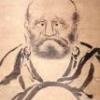
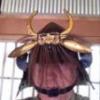
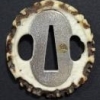
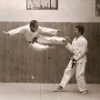

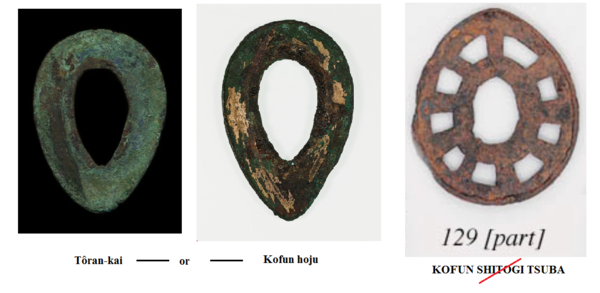
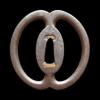

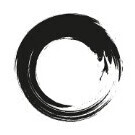
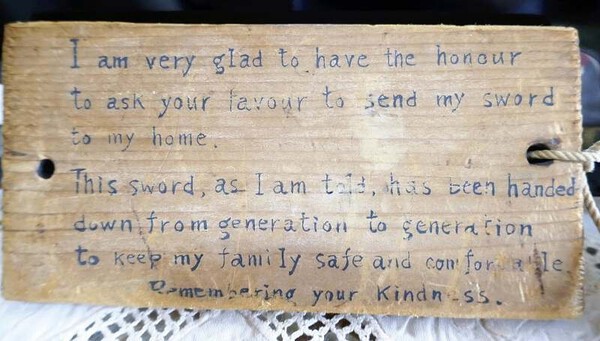
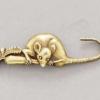
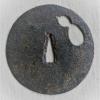
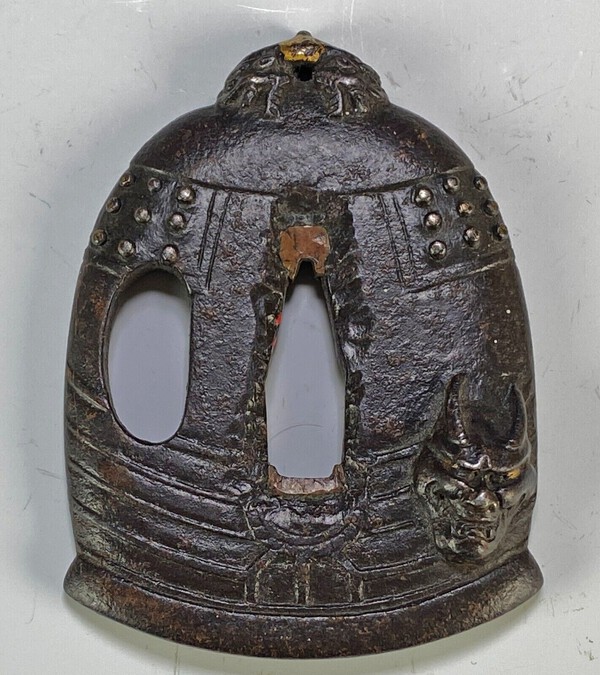
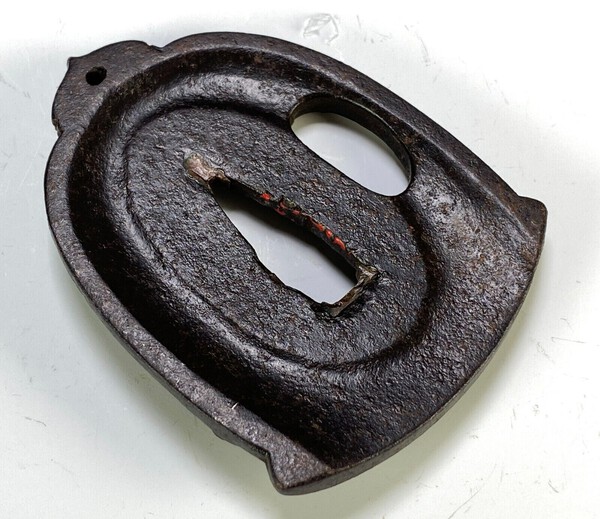









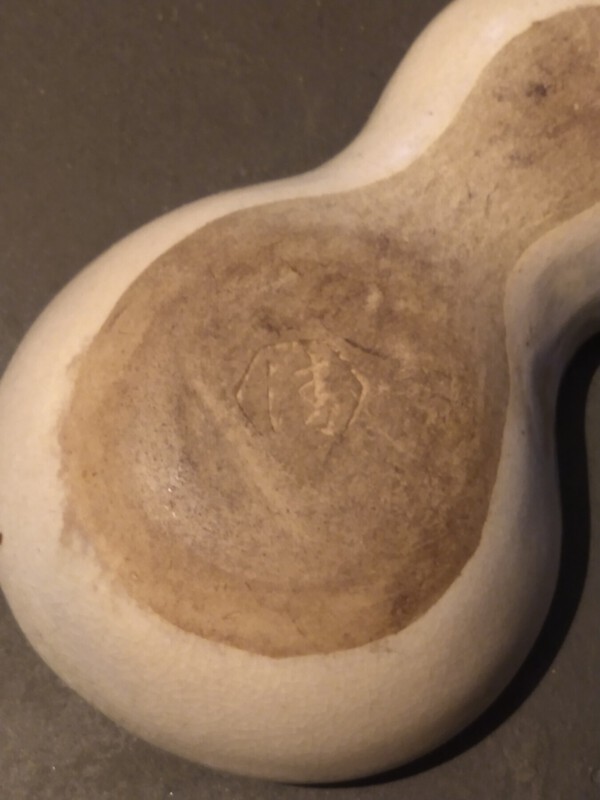
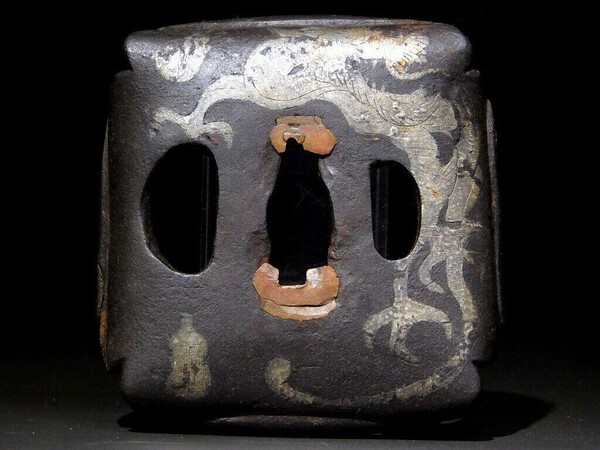
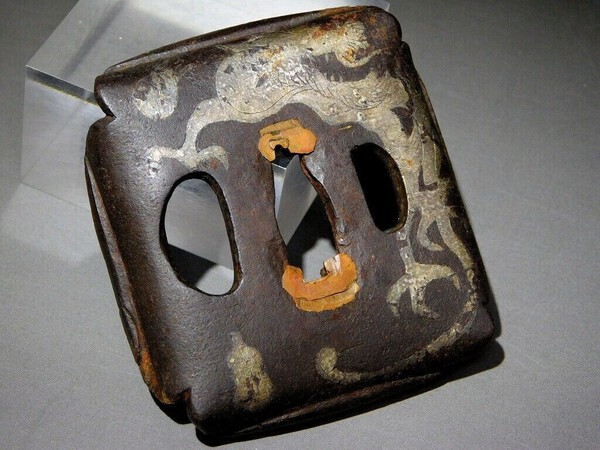
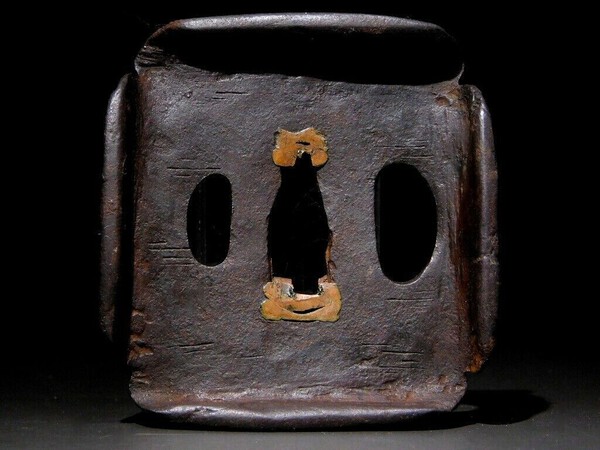
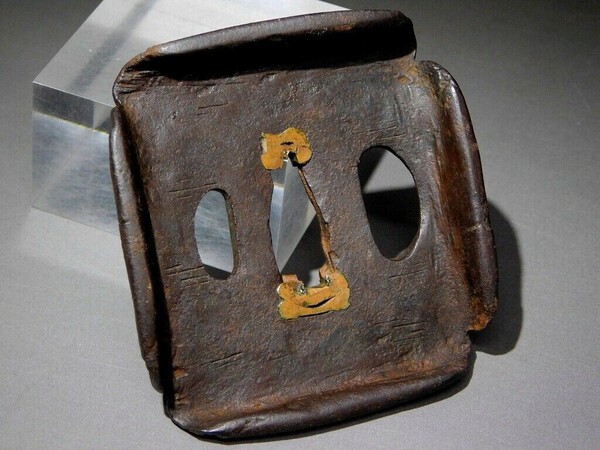
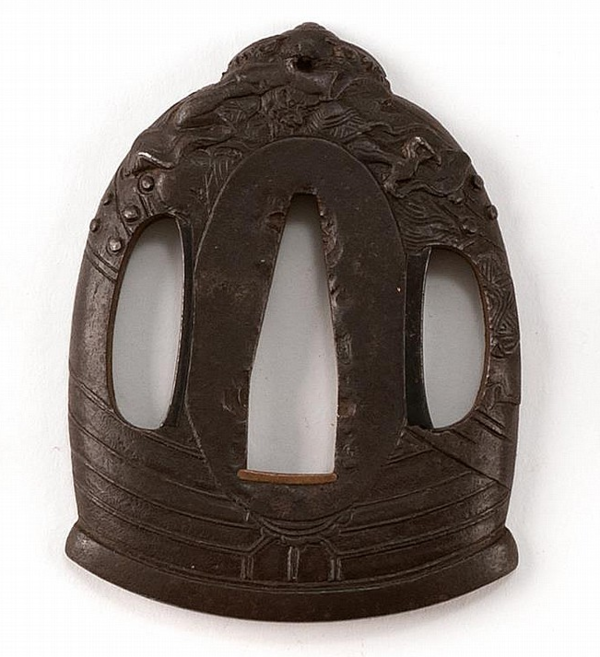
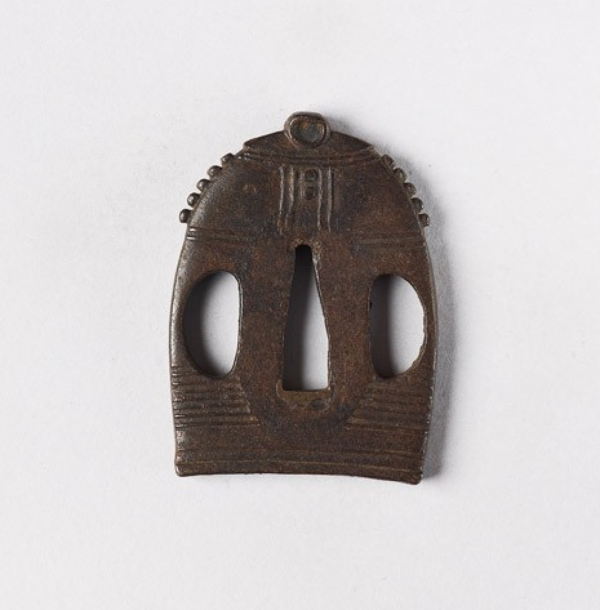

.thumb.jpg.3b9214d8c8defd1449350bd66930b2da.jpg)






